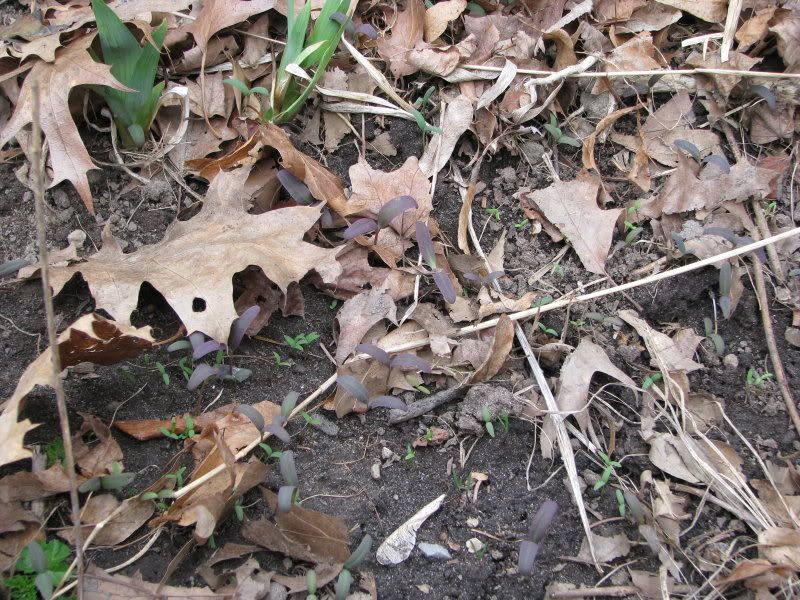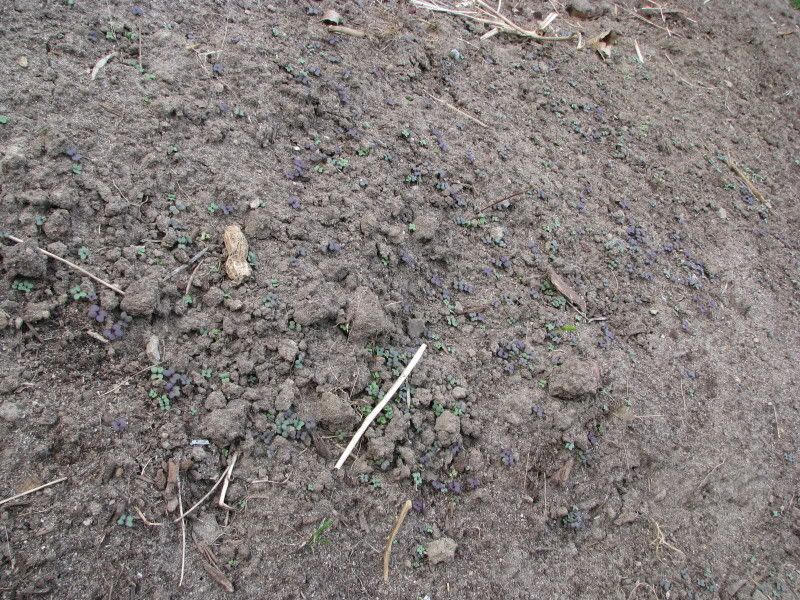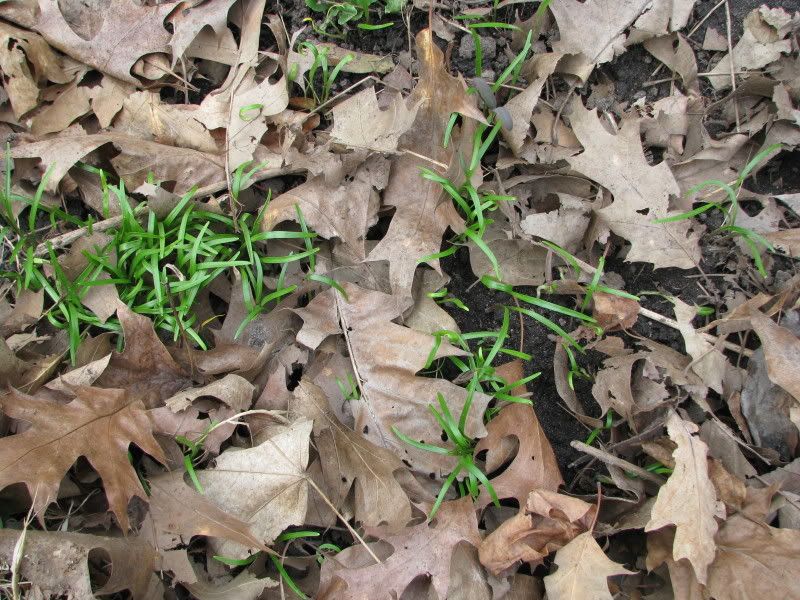
Mix of orachs from green to purple to variations in between.
Like I needed to worry. Yesterday, I notice a sea of tiny purple and green heart shaped brassica seed leaves where the osaka purple mustard was last year. I think it's safe to say that they have reseeded themselves.

That's not green and purple mold, those are all mustard seedlings.
The sweet cicely seed head I tossed down also has dutifully reproduced.

Sweet Cicely is a pain to germinate having a chilling requirement, liking a bit of freeze thaw (so I hear) and insisting that three earthworms do the tango at high noon on April Fool's day before breaking dormancy. It is also a short lived seed so I figure that I would let mother nature do what it does best. I lay the seed head down and said, good luck. As usual, they grew.
I'm waiting to see what else will pop out of the ground unplanted but certainly planned.
***
Orach is a slow to bolt spinach substitute that is so decorative that it is often grown as an ornamental. Comes in a range of colours from lime green to purple. It reliably self sows in my garden for early spring greens with no fuss. I think it should be said that spinach is an orach substitute.
Wild Garden Seeds has a great selection of Orach and Mustards.
Mustard is a spicy green that gives a stir fry or salad a kick, though milder versions have been bred. It is a cool weather lover as well but when it bolts, it showers the ground with seeds for a repeat performance the following year. Or you can eat some of the flower heads as sassy broccolini.
And lastly, Sweet Cicley has got to be one of my all time favourite perennial edibles. It is highly decorative with finely serrated leaves on this bushy perennial that reaches about 2-3 feet in my garden. The white lace cap flowers are similar to other members of the carrot family and attract beneficials. They are followed by large black seeds that stick straight up. The entire plant is edible and tastes of anise. It can be used as a sugar substitute. Best of all, it grows in part shade, being fond of the dappled shade at the edge of a wood lot so I'm told. Mine grows along the wall of our house in a dry garden. I love this plant.

6 comments:
There was SOOO much mustard in our community garden this year! Someone just let most of it go to seed and that's all there was in there. As soon as we turned the soil, all the new seeds germinated!!
We too had seas of little purple weeds. Then we double dug the bed and are praying to the gardening gods no more will surface. We've been eating it WAY too much. LOL
Sweet Cicley sounds intriguing. Any edible that will grow in the shade is an interesting plant. And that is is perennial is even better. Maybe I'll have to get some seed.
Yeah, I see some of the mustard seedlings as 'green manure' and the rest of salad greens with some mother plants in there.
Daphne: I'll have seeds in the fall, best to plant them (ie. throw them down where you want them to grow) that time of year anyhow. Remind me to send you some.
I have never grown Sweet Cicley in my gardenbefore. How do you go about preparing it as a sugar substitute?
The fresh leaves or green seeds (before they turn black - afterwards the seeds can be ground as a spice too but I've never tried this) are added to sour fruit desserts like currant or rhubarb. I don't know the exact amounts -- total guess to follow and it will give you an idea of how I cook -- but you can add a handful of leaves for let's say a third of the sugar. Let me know how that works and I'll write it as a rule. ;) My kids normally eat it out of hand and I use it as a substitute for chevril which has a similar flavour.
I've never found exact numbers and maybe it varies on the plant? I've tried candying the root and it was very good.
New Zealand spinach is also a highly productive self-seeder, and sorrel (I like the red-leaved variety) is also good, tho' being perennial, It's easy to end up with too many.
A photo here showing NZ spinach, orach, and red-veined sorrel, all self-seeded, growing together through mulch:
http://oca-testbed.blogspot.com/2010/02/free-range-oca_19.html
Post a Comment